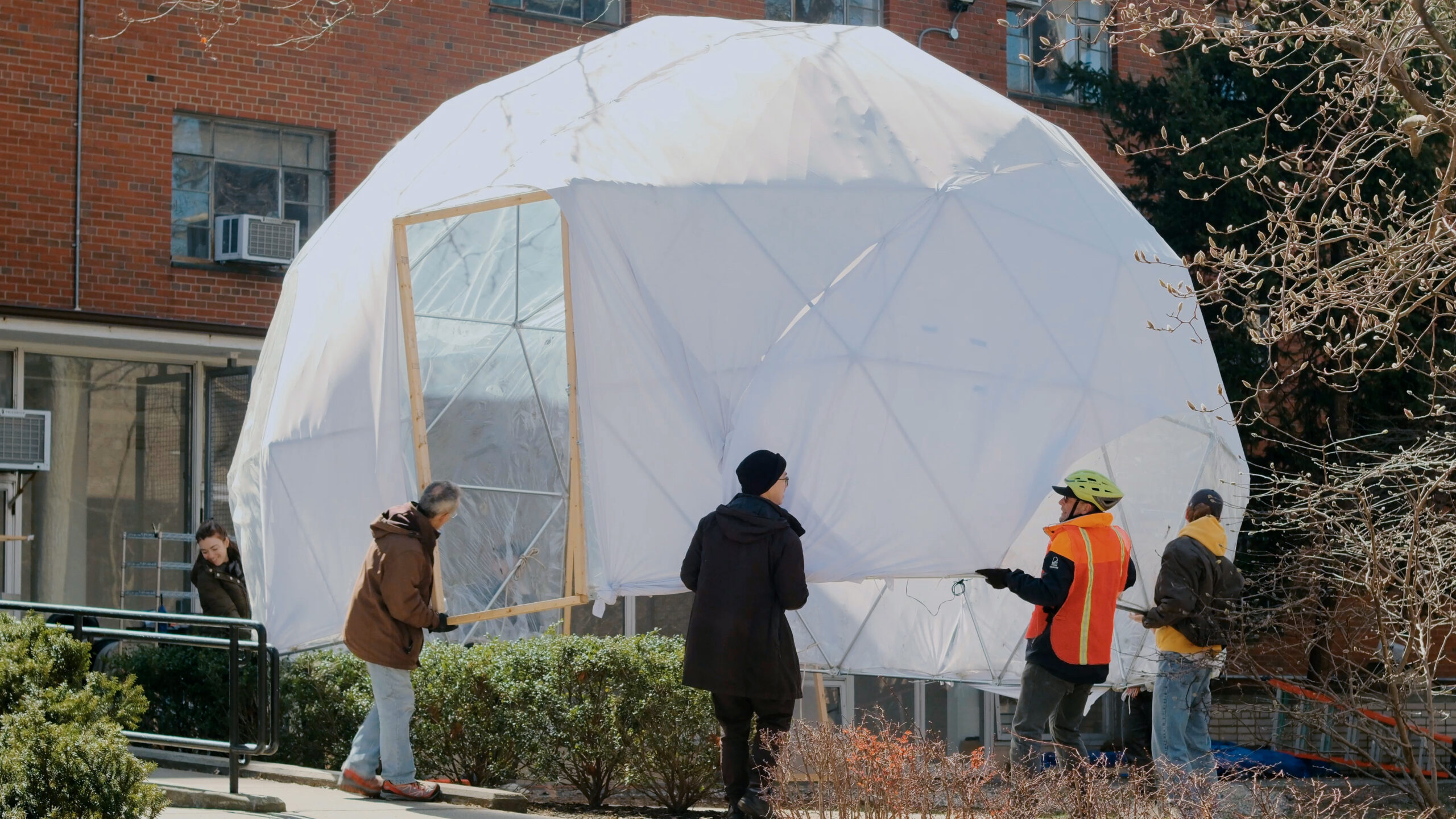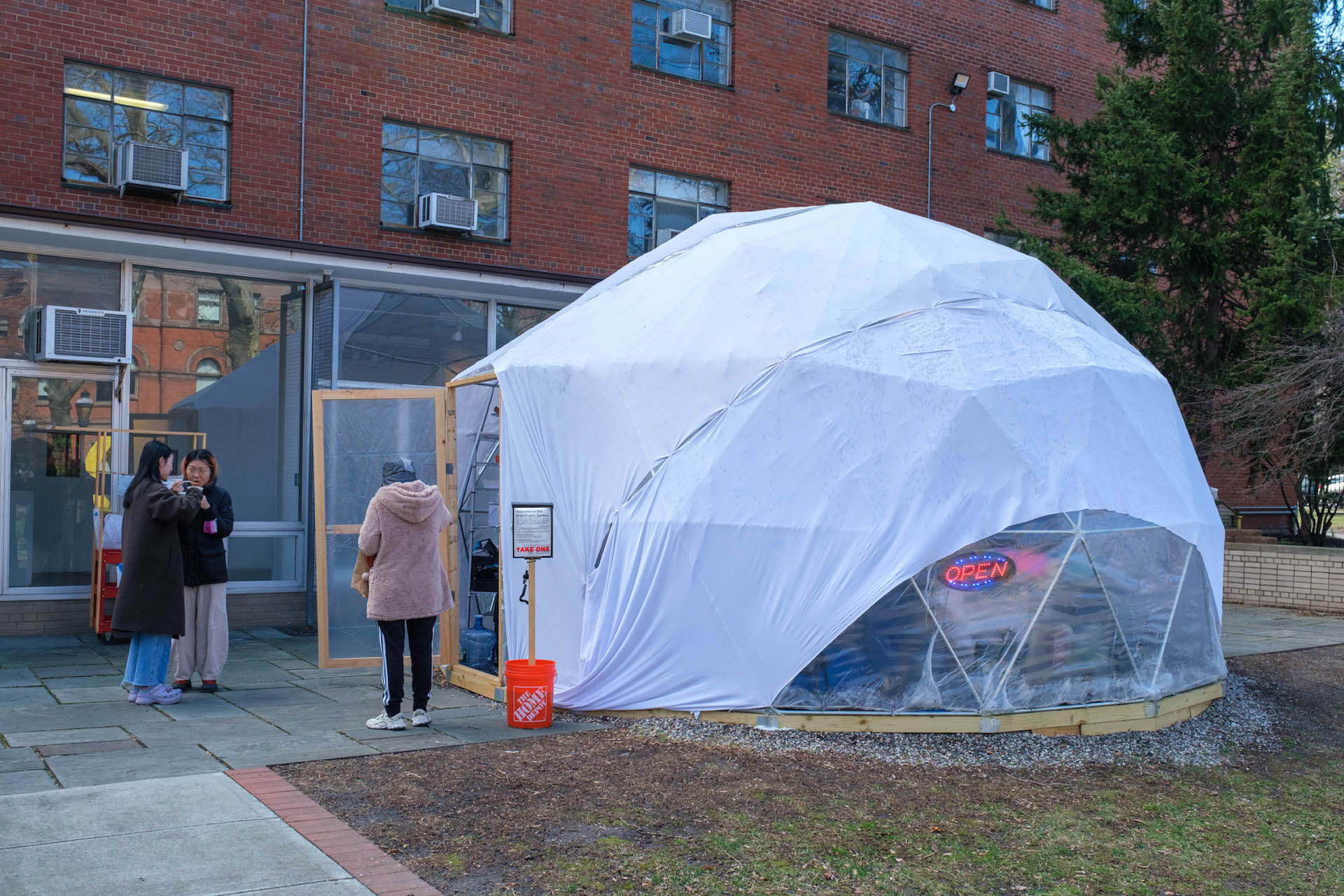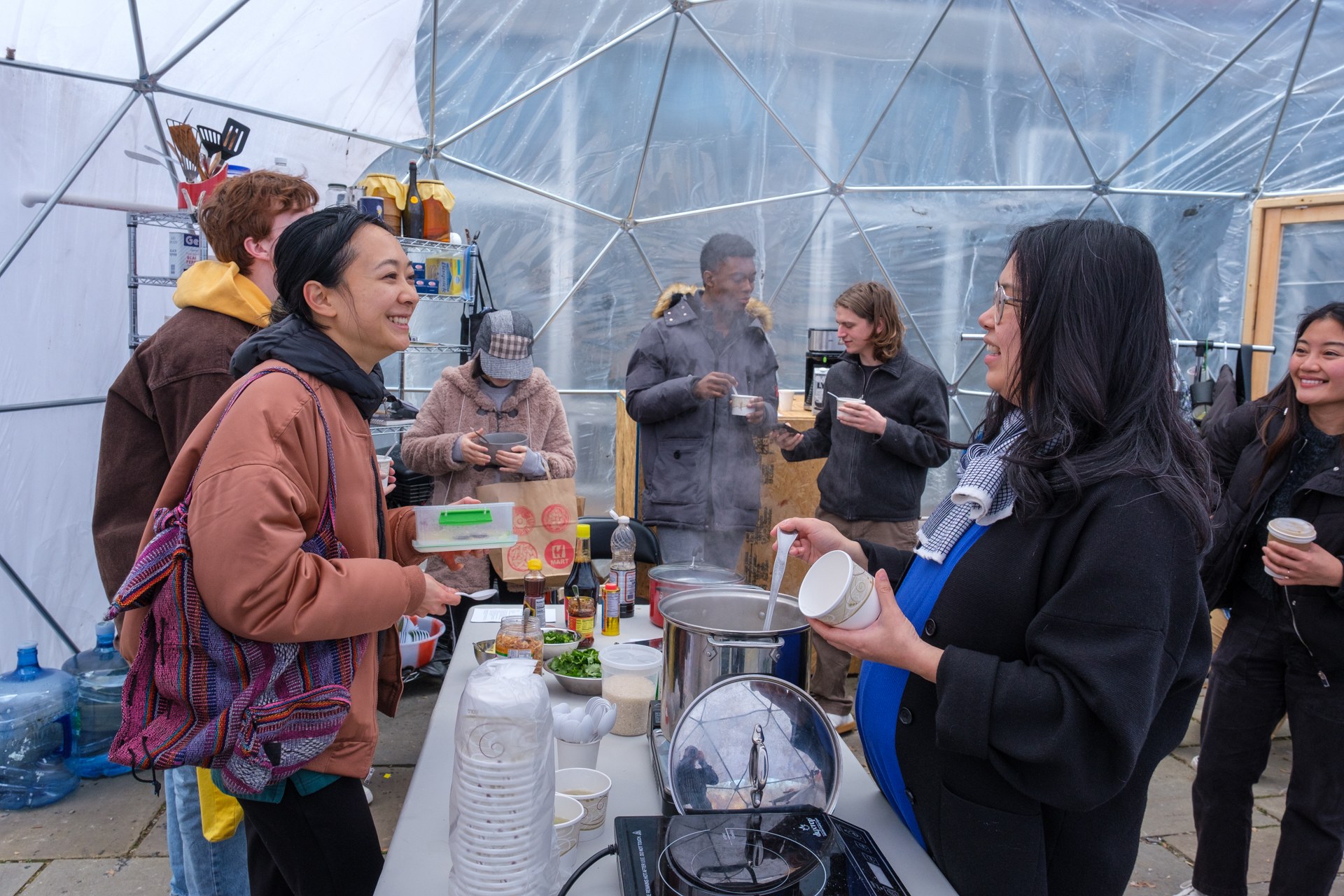Encounters in the Pratt Public Sphere
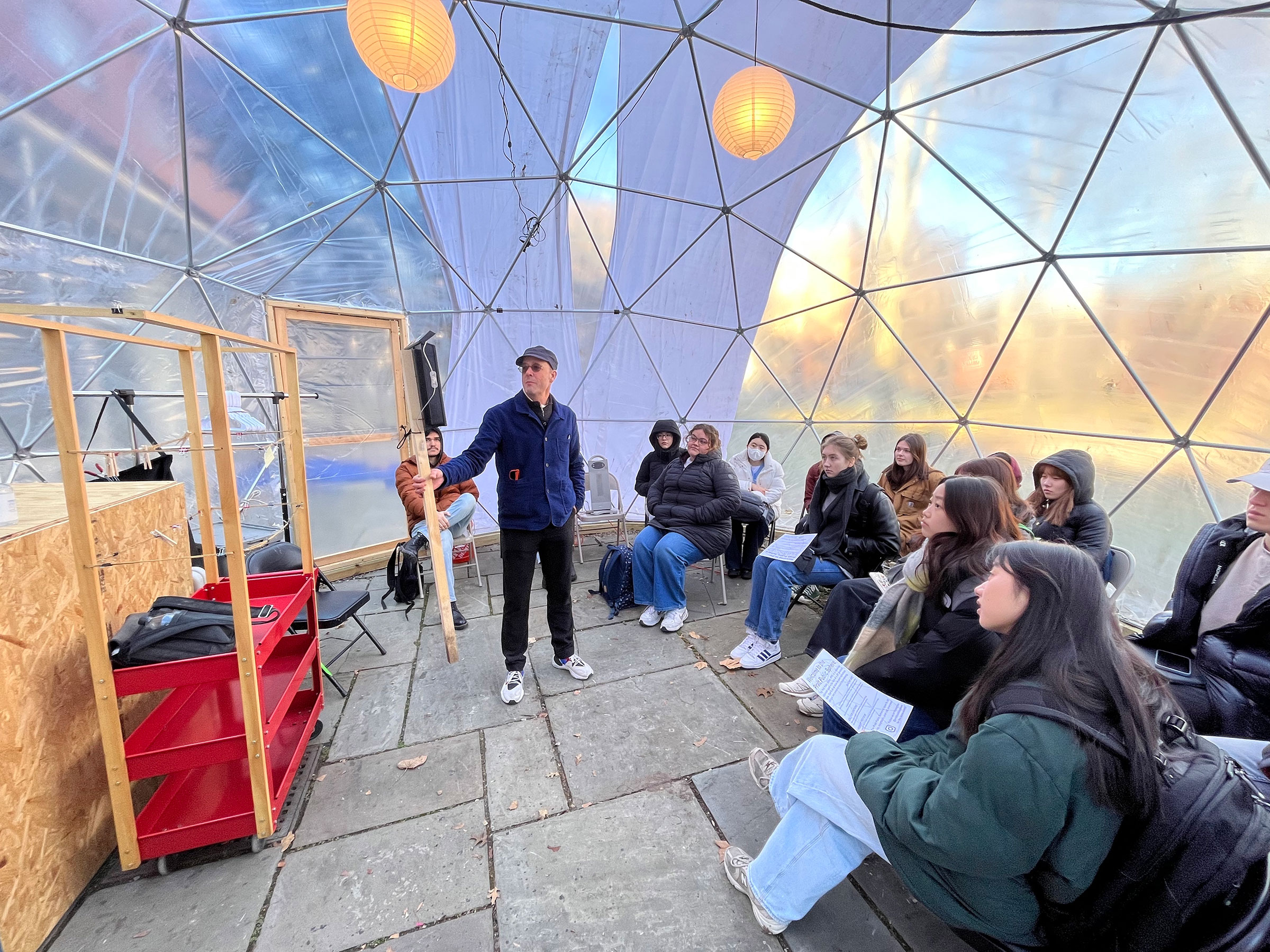
Mary Mattingly, Fellow in Civic Engagement, Daniel Pravit Fethke, Graduate Student and Alumni, Rafael de Balanzo Joue, Visiting Assistant Professor, Enrique Lanz Oca, Adjunct Assistant Professor
School of Art
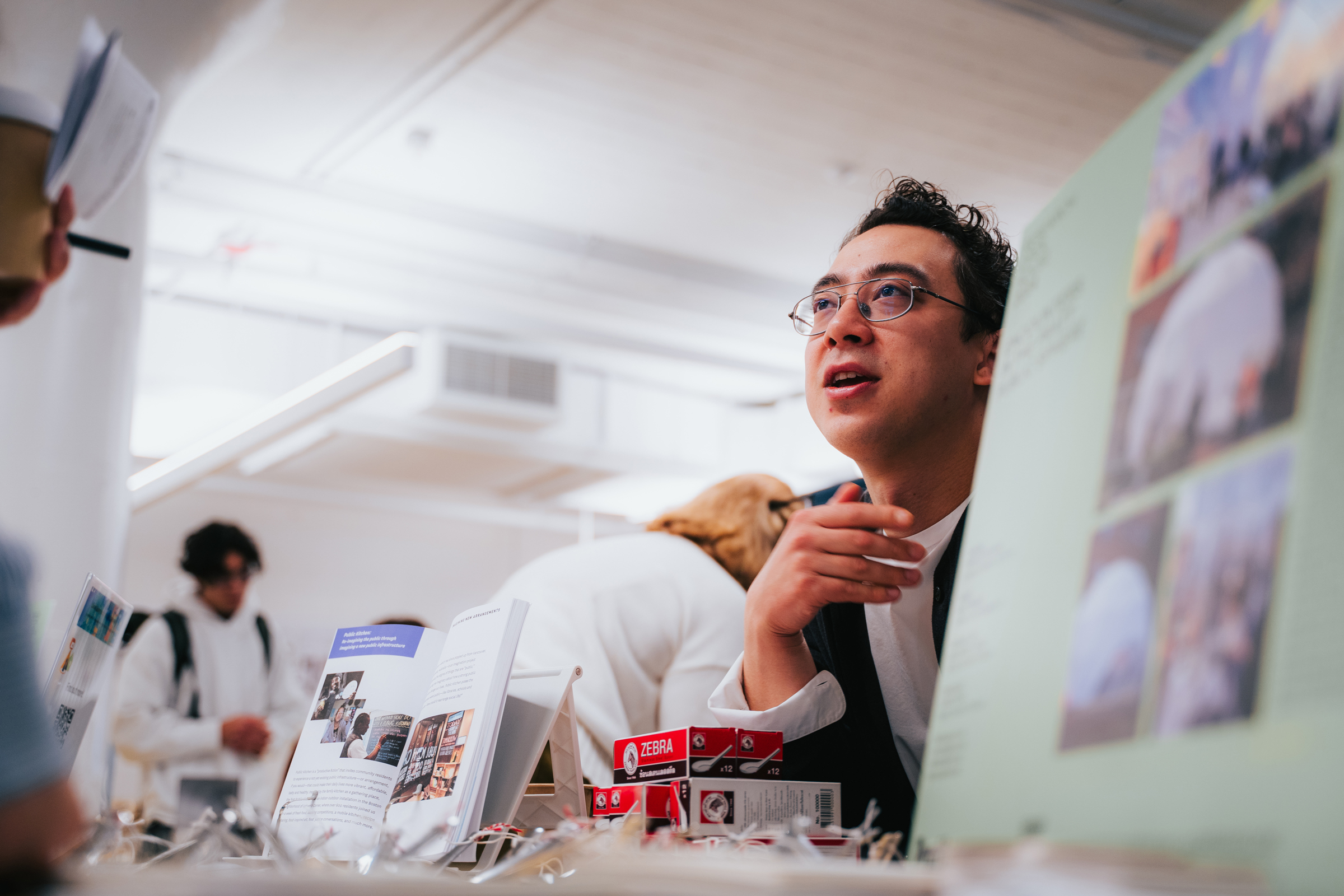
Constructed as a mixed-use classroom space out of a 20-foot geodesic dome, the PPS opened to Pratt Institute’s community, neighbors, and visitors from November 2022 through June 2023. The dome was initially built outside Dekalb Hall before being relocated to Pratt’s Rose Garden. It is part of Mary Mattingly’s framing of her civic engagement fellowship year through the themes of “Water Time,” “Earth Time,” and “Plant Time,” with the Pratt Public Sphere connecting with Earth and Plant Time. During its time on campus, it has hosted a range of community-based programming, including a bodega-style mutual-aid depot with a food pantry and free winter clothing, coffee hours, artist talks, and workshops.
“The dome in urban space can be seen through the lens of its histories, present iterations, and futures,” Mattingly said. “Indigenous cultures around the world have long worked with dome shapes as forms of housing and ceremonial spaces. In the United States in the 1950s and ’60s, Buckminster Fuller captivated public imagination with what could be seen as his most successful prototype for a deployable housing model. At times, I’ve utilized the form in my artwork, as intentionally provocative urban event spaces that are simple for a small team to build and use, and easily recognizable as either utopic or dystopic nostalgic objects, all the while standing in opposition to the scale and formality of much of New York’s built urban environment.” Daniel Pravit Fethke, MFA Fine Arts (Integrated Practices) ’23, has been working with the dome as part of his thesis project. This includes the Public Kitchen as well as the bodega-style mutual-aid depot that kicked off the Pratt Public Sphere’s programming. Along with his decade-long filmmaking practice, he has been facilitating workshops, cooking classes, and creative gatherings that center food and recipes as ways to explore identity and culture.
“The Pratt Public Sphere has been an incredible opportunity for us to provide a platform for intentional, interdisciplinary workshops on campus. “Our goal was to create a space that people can use for all forms of making, and we have had a lot of excited engagement from students, neighbors, and our greater NYC community. For me personally, I was able to assemble a working public kitchen and host free food events that amplified my existing socially engaged art practice.”“I’m excited about the enthusiasm around art, climate justice, and ecology on campus, and that there are a lot of ways that the arts students can crossover with different disciplines,” Mattingly said. “Students are really eager to bridge the boundaries between different disciplines, particularly with different ecological and sustainability initiatives happening in different ways in different majors.”
